Material for 3rd Year Engineering Materials (Polymers)
Solutions
Following some students' enquiries, here are the
solutions and marking scheme to the Summer 2004 exam paper
[PDF, 412kb].
The marking scheme for question 5 is not marked on the PDF, but it is
pretty straight forward.
-
Maxwell [5]
-
Kelvin [5]
-
Standard-Linear-Solid plus Discussion [5]
-
Numerical calculation [5]
To give a total of 20 marks for the question
A note on Question 5
When answering this question, some people misinterpreted the
expression for creep compliance in Question 5, and interpreted one
or both of the minus signs as multiplications.

The misinterpretations gave rise to a less-realistic viscoelastic model,
and it is important to see why. If we interpret it correctly, then at
t=0, the
value of D begins as (omitting units) 2-exp(0)=2-1=1. As t increases,
the exponential term decreases from one towards a limit of zero. This
means that D gradually increases from 1.0 towards a limit of 2.0-0.0=2.0
This is plotted in the figure shown (click for a full-size view),
where the red curve shows the correct interpretation. Also
plotted are other ways that D was interpreted. By comparing these
with the behaviour discussed in the first parts of Question 5,
it is easy to see that these alternative models are not at all
realistic.
Handouts
Polymer Processing lab
Lectures
-
Lecture 1 -- Introduction (no handout available)
-
Lecture 2 -- Polymerisation reactions
-
Lecture 3 -- RMM, MWD, Material properties, Crystallisation,
Amorphous/Crystalline structures, Glass transition temperature
Acetates:
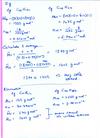
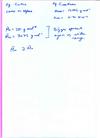 Or
all in one file
Or
all in one file
-
Lecture 4 -- Introduction to Viscoelasticity
Acetate:

-
Lecture 5 -- Viscoelasticity (no handout available online, short
lecture)
Acetates:


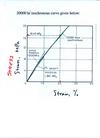

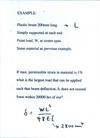
 Or
all in one file
Or
all in one file
-
Lecture 6 -- Maxwell model, Kelvin model and Standard Linear
Solid
Acetates:


 Or
all in one file
Or
all in one file
-
Lecture 7 -- Viscoelasticity, Boltzmann Superposition
Acetates: (note that the second worked problem is Q.6 from
Summer 1999)



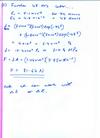 Or
all in one file
Or
all in one file
References and Reading
Recommended Text
The primary text being used for this course is
-
Principles of Polymer Engineering, 2nd Ed.
;
N. G. McCrum, C. P. Buckley and C. B. Bucknall
;
Oxford University Press, 1997.
The first edition is very similar to the second. This book is available
in the library and it is strongly recommended that you use it during
your revision
Feedback
Comments/suggestions/questions to
michael.conry@ix9.eu



 Or
all in one file
Or
all in one file






 Or
all in one file
Or
all in one file


 Or
all in one file
Or
all in one file



 Or
all in one file
Or
all in one file